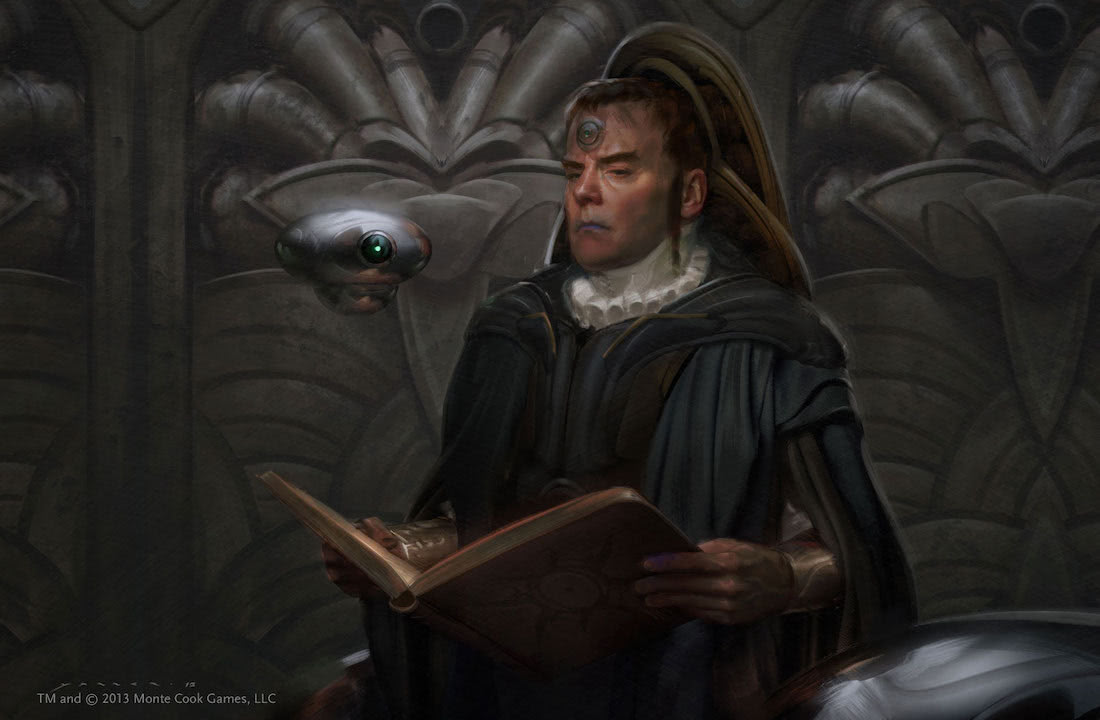When and how to announce difficulty levels (abbreviated to “DC” for the rest of this article) to players is a common question on forums, as it’s one of those things left open in the core books.
In short, the book says you can choose whether to tell players the difficulty level for any given task, and that it’s a good idea to tell starting players.
Here is how I do it.
Starting Out
When you start a game, whether it’s with new players or old ones, you should disclose task difficulty. It will allow players to get a feel for the world and internalize how their resource spending will look. What is hard, what is easy, when they need to spend effort, etc. It is important that players grok that from the start.
Keep that up for the whole first session and once the finale comes, stop. This will have a nice secondary effect of giving your finale more tension.
Here’s the first catch that you need to look out for: the Scan ability. If you have a player with Scan, you don’t want to invalidate their ability by straight up telling DC numbers at all times.
There are two ways around this in the first session. You either remind the player to always spend his action to activate Scan or treat it like an Enabler for the first session (sans finale), sparing his actions. You will need to communicate this decision to the player beforehand though, in order to avoid confusion later on.
So now that your players have a good sense of how things work in your world, we come to the second catch.
Character Expertise
Characters will have a sense of challenge for some tasks even if players don’t. Here is an example: if you were to stand next to a tall wall in real life, you would have a good sense of how difficult it would be to climb it. If you were a trained climber, you would know exactly how difficult the climb is.
This means that you need to think if any of the characters can determine the task difficulty “passively” on their own, taking into account their background, story progression, and any skills. This is something you want to train your players to ask as well. “Can my character discern this difficulty, because he is such and such, did this and has that?”
Because you will forget.
More General Levels
Soon enough you will get into situations where characters or players have a general but imprecise idea of how difficult a task is. In these situations, I split the range in two or three and say something like “It looks challenging, but it might be easier than it looks” for 1-5 or “It looks challenging, but it might be worse than it looks, even impossible” for 5-10. Take the same approach if you decide to split the difficulty range into three parts. It’s worth noting here that although I give an in-world description of the perceived difficulty, players know what it’s about on the meta level, so as soon as I say: “Looks demanding, but might not be,” they know, without a doubt, that I mean DC 5 or lower.
Impossible Difficulties
As stated in the rules DC 7-10 are not rolled, unless a player can bring the difficulty down into the d20 range. In practice, it means you must communicate this fact to players at some point. You don’t want to wait for the player to spend all they have, roll a natural 20 and only then shrug and tell them “Sorry, that’s not enough.” That’s a fun breaker right there, don’t do that :)
Every time you have a DC 7+, after the player states all their skills, assets, and Effort, but before they roll, if the target number is not in the d20 range, you should stop and say: “Unfortunately that will not be enough for success.”
A Bit of Psychology for the End
When the DC is unknown players will tend to overspend their pool points, due to uncertainty. You can use this to great effect when presenting new monsters or weird prior world magic in order to keep your players in suspense. Sometimes even Scan will not pick up all the crazy prior world stuff you can think of.


Comments